
If you’re new to shopping for homeowners insurance, take the time to learn about the factors that play into the total cost and various policies’ coverage. With this information, you have the power to make an informed decision when it comes to choosing the best option for your home.
Your home’s value impacts the amount of insurance coverage you need. However, the value alone may not be as important to the overall protection amount as you may think. To appreciate how home value and homeowners insurance are related and distinct, you must understand the differences in the types of value placed on your home and their impact on insurance.

What most people don’t know is that their home has several values. What the value will be used for and who makes the estimate can impact the total amount you see. Therefore, your home could have several different values that may be tens of thousands or hundreds of thousands of dollars apart from one another.
For some types of home valuation, you want to have lower numbers, such as appraised value, because the amount determines your tax burden. While homeowners insurance typically uses actual cash value or replacement value, you should still understand the other types of home valuations to get a better understanding of your financial responsibilities.
The following are common types of home valuation that you as a homeowner may see:
The first, actual cash value, is a metric that some insurers use to determine coverage. This value only covers the price of the home in its current, depreciated state. However, it does not factor in replacement costs, such as building materials or labor to rebuild or replace the home. Therefore, this type of coverage will be lower than the replacement value for the home.
The appraised value is the amount an independent appraiser determines the house is worth. This value helps when getting a mortgage for your home. In many instances, the lender selects an appraiser for this job, and the borrower pays for their services. This type of home valuation may also occur if you need to use your home as collateral for a loan.
The assessed value is the amount the county determines your home is worth for collecting property taxes. In many cases, the assessed value may be lower than the market value or the appraised value. As a homeowner, this smaller number is good because it means that you will spend less on property taxes.
Fair market value is a widely fluctuating number based on the value of your home at this minute. It includes factors such as the values of nearby homes and amenities. Typically, this value reflects how much someone would pay to buy your home in the current housing market.
Therefore, your home’s market value will likely be very different from the amount you paid for the home or other valuations on it. You may need a licensed appraiser to estimate fair market value if you must make a home insurance claim or refinance your mortgage. Local governments may use this value when calculating reimbursement for eminent domain proceedings.
Replacement value is the most important number when acquiring homeowners insurance. This number reflects how much the insurer would pay to replace your home and all the belongings in it, using the same types of building materials. Consequently, the replacement value may differ significantly from the constantly changing fair market value or the often-lower assessed value.
Since the coverage for homeowners insurance often comes from the replacement value, it’s usually not the same as other home valuation amounts you see. Plus, whether you have pets, live close to a fire station, have an older home or have a specific type of roofing material can impact your total home value for insurance coverage and your rates. However, these factors may not affect how much you pay in property taxes or sell your home for.
When getting coverage, talk to your agent about the differences between your home’s actual cash value and replacement value to understand how each will affect your rates. Because each home and homeowner has different coverage needs, getting a customized quote for your home is always the best option.
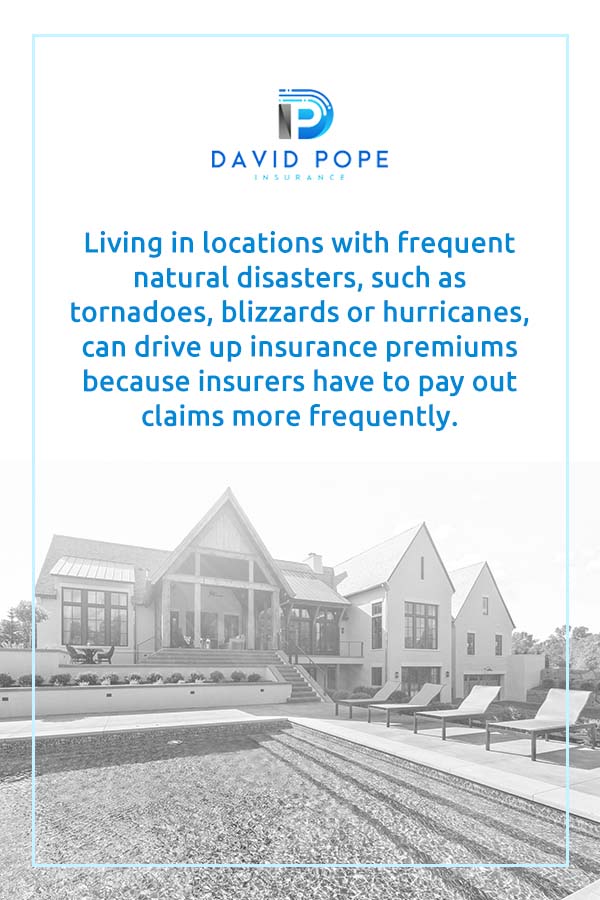
How much does home insurance cost? Where you live can make a big difference in how much you will pay. In fact, the difference in annual costs between the most and least expensive states is $3,200. Living in locations with frequent natural disasters, such as tornadoes, blizzards or hurricanes, can drive up insurance premiums because insurers have to pay out claims more frequently.
In Missouri, where we center our practice, the average cost of home insurance for a year is $1,558 — around $130 per month — for a $250,000 home. This rate is slightly higher than the national average. However, your home’s value and location will affect the amount you pay for coverage.
Nationally, the average homeowner’s insurance rate is $1,312 annually —which averages to $109 monthly — for a home valued at $250,000. This number could increase next year if the trend of rising rates started in 2009 continues. In fact, the average homeowner’s insurance premiums have jumped 42% between 2009 and 2021.
In many cases, foregoing insurance is not an option. If you have a home mortgage, part of the loan will likely require you to have homeowners insurance. Fortunately, there are ways to save money on your insurance premiums. The best option is to shop around because separate insurers have significantly different prices for similar coverage. Working with a trusted insurance agent who can do the shopping for you makes it easier to get the coverage you need at a price that you can afford.
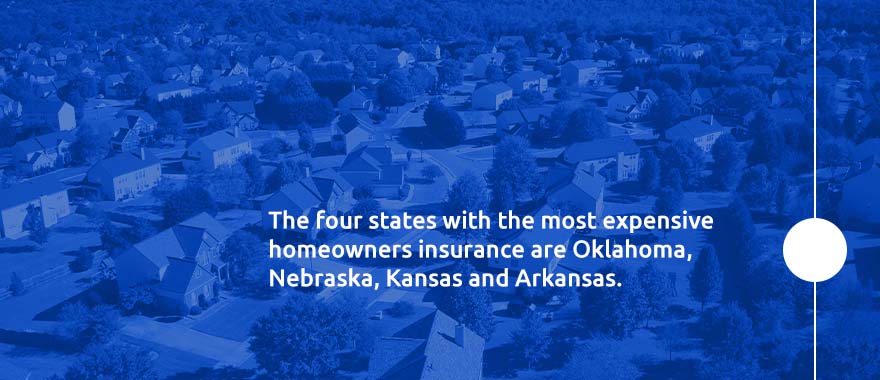
While states like California have earthquakes, these events occur infrequently. The most expensive states to have homeowners insurance are located in Tornado Alley, which is the stretch of Midwestern states that frequently experience devastating tornadoes. The four states with the most expensive homeowners insurance are Oklahoma, Nebraska, Kansas and Arkansas.
These states can also change. For instance, in 2018, the four most expensive states for homeowners insurance were Louisiana, Florida, Texas and Oklahoma. Note that three of these four are in locations susceptible to hurricanes and flooding. Therefore, a natural disaster that impacts a large area of a state could also affect insurance costs.
The annual cost of homeowners insurance in each of these states is over $2,000 a year, which means that among these expensive states, only Arkansas has monthly rates under $200. Such large payments can be challenging since homeowners insurance is an additional cost after paying the mortgage and other bills to keep up your home.
Not every state has high prices for homeowners insurance. In fact, in states with the lowest rates, the average monthly home insurance is as low as $31 a month. Where can you get such low premiums? You’d have to move to Hawaii. The other states with the top lowest insurance rates are Utah, Delaware and Vermont. Each of these locations has monthly premiums in the $50 to $60 range.
Like their pricier counterparts, the least-expensive states for home insurance can change. For instance, in 2018, the four states with the lowest average costs were Oregon, Utah, Idaho and Nevada. These states see few tornadoes, are not susceptible to hurricanes and are fairly safe from other widespread natural disasters, so the stable environment keeps homeowners insurance rates low.
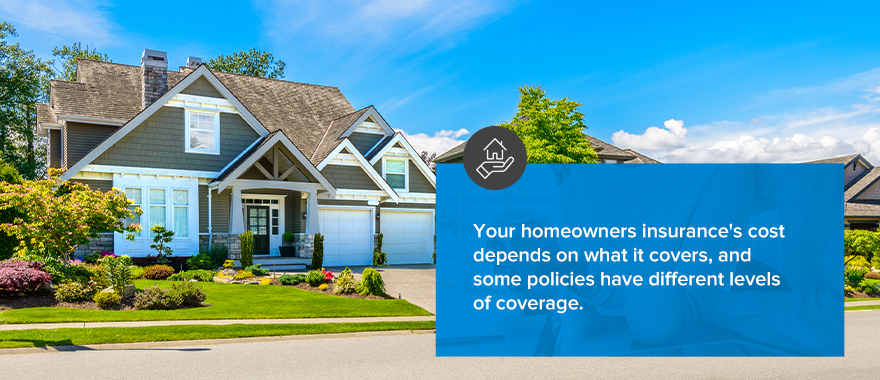
Your homeowner’s insurance’s cost depends on what it covers, and some policies have different levels of coverage. As noted, insurance based on actual cash value has a lower total coverage amount than policies based on replacement value. However, a replacement policy only determines the coverage to replace the home and its contents. Other types of homeowners insurance coverage include the following:
Dwelling coverage is usually based on the replacement value for your home. This type of insurance covers the rebuilding costs for covered events, which may include windstorms, fires or tornadoes. Always read over your policy to verify its covered events because insurers can differ in the specific damage and causes they’ll cover.
For instance, if a tornado severely damages your house and tornado damage is covered, dwelling coverage would pay to help you rebuild your home. Dwelling coverage may help you restore damaged parts of your house, such as:
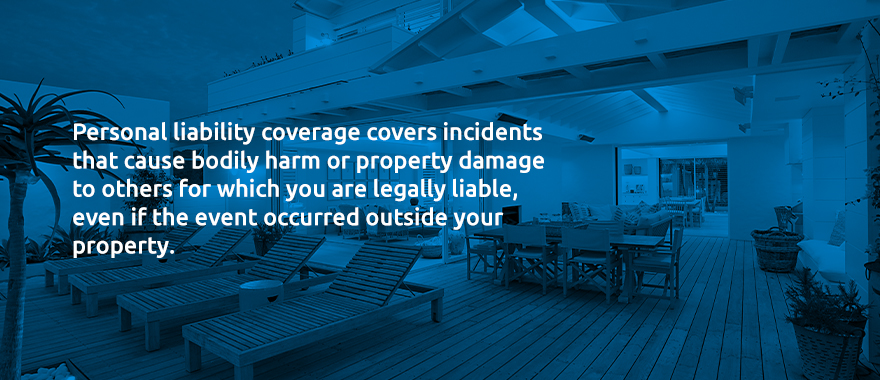
Personal liability coverage covers incidents that cause bodily harm or property damage to others for which you are legally liable, even if the event occurred outside your property. Legal liability may stem from negligence or directly causing an event. This insurance can also pay for lawsuits against you in these cases. Three examples of coverage under personal liability are:
Depending on your policy, the amount of coverage you have can range from $100,000 to $500,000. Therefore, you should talk to your insurance agent about the specific level of coverage you have and whether you need to increase or decrease it.
If a severe incident requires you to relocate until repairs finish, you can use the loss of use coverage to pay for staying elsewhere during the process. This amount is a small percentage of the total dwelling coverage. However, it can be invaluable if you find yourself displaced from your home due to a covered incident, such as a fire or storm. Depending on the level of coverage, potential expenses this aspect of homeowners insurance could pay for include:
When inquiring about or making use of this type of coverage, check with your insurer to find out exactly what the policy will pay for.
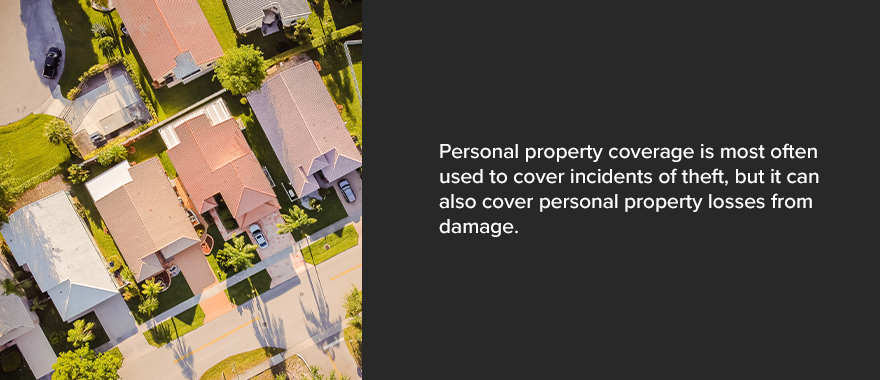
Personal property coverage is most often used to cover incidents of theft, but it can also cover personal property losses from damage. Unlike dwelling coverage that pays to rebuild your home, this kind of policy pays to replace your lost personal goods. Some goods that this form of coverage may pay to replace include:
Policies can vary in the amount covered. In fact, some plans have specific coverage limits for types of personal property, such as fine artwork or cash. The total amount is usually a percentage of dwelling coverage — less than 75% of that amount in most cases. Plus, you can select a replacement or actual cash value for calculating this coverage. The former offers a higher coverage amount than the latter but may yield higher premiums.
If you have an outdoor shed, fence, driveway or detached garage, these types of structures fall outside your dwelling coverage policy. However, other structure coverage can apply to them when they sustain damage. Coverage for policies like these usually equals around 10% to 20% of your home’s dwelling coverage, which is similar to the amount for loss of use coverage.
Since these structures are usually smaller and detached from your home, replacing them costs less and often does not require you to leave your property. Therefore, the lower coverage amount has sound reasoning behind it.
Medical payments coverage helps you pay the medical expenses of anyone harmed on your property. Unlike personal liability coverage, medical payments coverage does not require proof of liability. Regardless of who was at fault, these policies cover the medical bills.
In many instances, medical payments coverage may be optional. However, it can also appear as a component of standard homeowners insurance policies. Check with your agent to find out whether this type of coverage is right for you or if you can forego it on your policy.

Several factors influence the total amount of money you spend each month on homeowners insurance. Since these details can drastically affect the overall cost, you may find your insurance rates changing each year. This fluctuation often occurs due to factors outside of your control. However, there are some things that you can do to keep your homeowners insurance rates low or reduce your existing costs.
Your home’s attributes can affect the amount that you pay in insurance. For instance, if you have a newer home, you may have lower rates because it will be less likely than an older home to have structural problems related to age.
Another attribute of the home that affects insurance rates is the type of roof you have and other building materials used. For example, a metal roof lasts much longer than an asphalt roof and is less likely to sustain damage from fires or windstorms. If you live in a wood home, you may pay more for your coverage because your building materials are susceptible to termite damage.
Having a fun backyard could cost you more in home insurance. Trampolines, pools and spas all can raise the insurance rates due to the higher risk these structures bring to the home. If you don’t have one of these structures already and are considering installing one, talk to your insurance agent to see if adding one will affect your policy rates or coverage.
Where you live plays a significant role in your coverage costs. Overall, if you live in a place that experiences natural disasters such as tornadoes or floods, you may have higher insurance than someone in a location without these risks.
Your home’s proximity to neighborhood fire hydrants and the fire station can also affect whether you spend more on your insurance. Homes closer to these features can get more affordable rates due to the lower risk of severe fire damage.
High-crime areas can raise your home’s insurance costs. The more crime in your area, the greater the chance that you may have a loss of property from theft or property damage from vandalism.

Your location and home’s attributes are not the only things that affect your insurance rates. In fact, your lifestyle and history could also impact how much you pay.
Pets are a common reason people spend more on insurance. If you have a large dog or a breed perceived to be aggressive, your policy may be more expensive. Some insurers may not cover households with specific breeds that are deemed aggressive because the liability risk is too great. However, if you have a goldfish or another low-risk pet, you may not see a change in your home insurance rates.
Another factor that could raise your home insurance rates is your credit history. A low credit score could drive up your rates because insurers want to ensure you’ll pay premiums on time. Insurers may not run credit checks all the time, but if you have a good credit score, a credit check could help you get lower rates.
If you’ve had home insurance before and made multiple claims, you may spend more on a new policy. When you’ve filed multiple claims in the past, an insurer sees that you may be more likely to do so in the future, which may raise your rates. On the other hand, if you have a claims-free history, you could get lower rates.
if you want to reduce your homeowners insurance costs, discuss the following possibilities with your agent:
By talking to your agent, you could find out that you qualify for discounts to lower the total amount you spend on home insurance.
At David Pope Insurance Services, LLC, we are local agents for those in and around Missouri. Our family-owned company has the flexibility to shop around to get you the best rates. We specialize in helping people get home insurance policies, coverage for first-time homeowners, options with low premiums, coverage for high-value homes and reliable plans. We work hard to match each of our customers with the best type of coverage for their needs.
If you want to get your home protected with a quality insurance policy, let us know. Reach out today to David Pope Insurance to request a quote to get your personalized answer to “How much is homeowners insurance?”